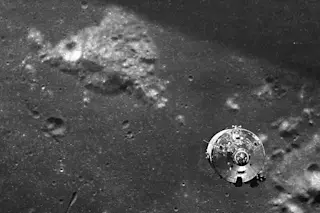Apollo 10 photograph taken from the Lunar Module "Snoopy" showing the Command Module "Charlie Brown" with Mt. Marilyn in the background (north is to the left, scene is 80 km wide). (Credit: LROC) In 1968, Jim Lovell became the first human to pilot a spacecraft — Apollo 8 — around another world. And two years later, his Apollo 13 heroics earned him an eternal place in spaceflight history. But those feats also left Lovell as the only person to visit the moon twice but never walk its surface. In July, Lovell got his chance to leave a lasting mark on our satellite. Explorers have always named newly discovered landmarks. But things didn’t work out that way for Apollo astronauts — at least until 2017. His wife’s name is now immortalized in Mount Marilyn, ending a years-long effort to recognize its place in lunar history. NASA’s astronauts put informal names on ...
Mount Marilyn: A Name That Will Stick...Finally
Mount Marilyn lunar landmark officially recognized after decades, honoring Apollo astronaut James A. Lovell's historic heritage.
More on Discover
Stay Curious
SubscribeTo The Magazine
Save up to 40% off the cover price when you subscribe to Discover magazine.
Subscribe













